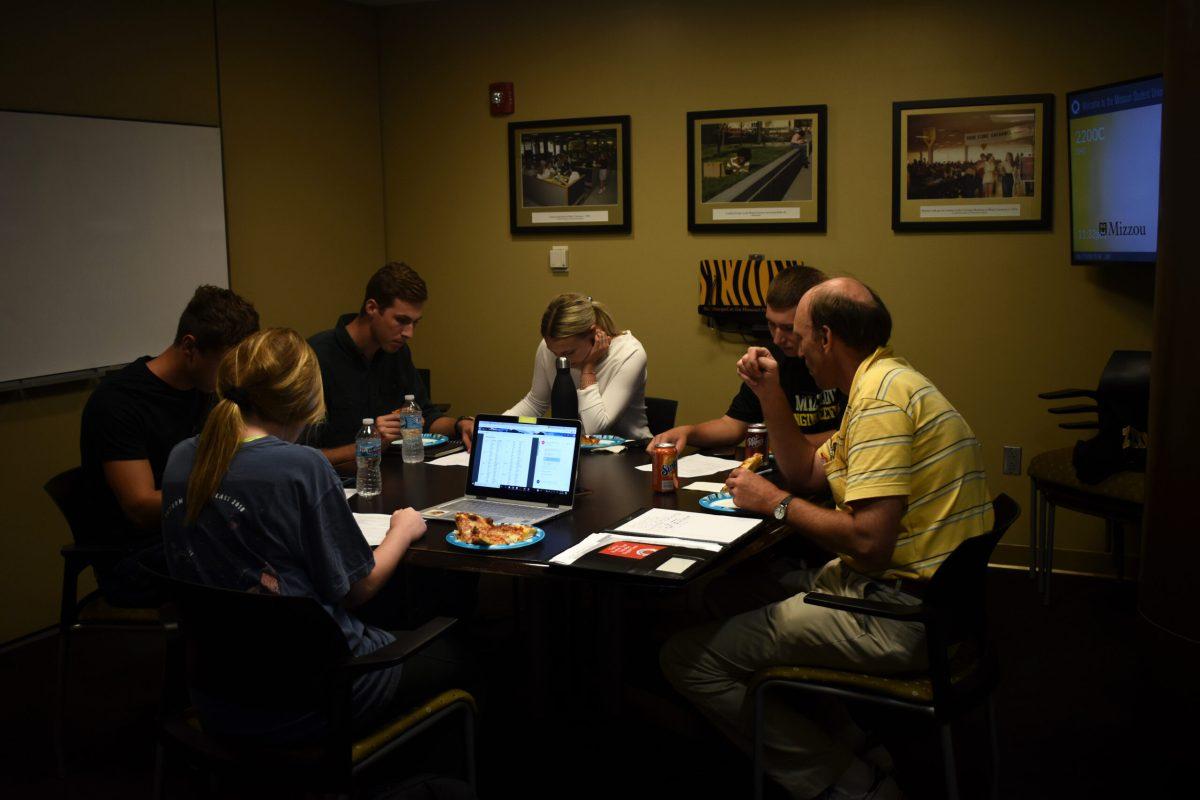
Representatives from Virgin Hyperloop One, the Missouri Innovation Center, Black & Veatch and Olsson Associates met with students on Thursday in the MU Student Center’s Leadership Auditorium for the Hyperloop Hackathon in order to explore the local ideas surrounding the Hyperloop project.
A Hyperloop route is currently being considered along the Interstate 70 corridor to connect Kansas City, Columbia and St. Louis. The Virgin Hyperloop One team estimates that the Hyperloop trip from Kansas City to St. Louis would take around 35 minutes.
According to the Virgin Hyperloop One website, the Hyperloop is a method of transportation where a vehicle called a pod utilizes electromagnetic propulsion to move through a low-pressure tube. With this new technology, the Hyperloop is estimated to be able to reach speeds up to 670 mph.
“What I think is great about this is the potential for this to be impactful in joining communities so that we really become one community,” Jeff McKerrow, multimodal transportation leader for Olsson Associates, said. “It’s no longer an all-day commitment just to come to Mizzou and go back, to go to St. Louis and come back. Those are things that could happen instantly without a lot of foreplanning.”
As explained at the Hackathon, in order for progress to move forward with the creation of a Missouri Hyperloop, the results of the currently underway feasibility study will first be considered. This study takes into account logistical factors, such as the total distance that the route would stretch and the number of rivers along the way; economic factors, such as demand and the flow of people between the stops; and regulatory factors, such as the federal, state and local laws.
During this feasibility study process, the Hyperloop team will usually try to get the public involved. This is where the Hyperloop Hackathon comes in.
“We would love to have input from the university and its students,” Ismaeel Babur, senior civil engineer for Virgin Hyperloop One, said. “So typically, halfway into the study, we try to get feedback from the public, and then we try to address all of that in our study.”
Since the Virgin Hyperloop One Innovation Campus is situated in Los Angeles, the team finds the students’ local perspectives valuable for adapting the project to Columbia, Anthony Bauer, Virgin Hyperloop One’s senior tunnel engineer, said.
“I think they bring a very unique perspective, something that we obviously can’t see from sitting in offices in Los Angeles,” Bauer said. “This is their day-to-day life that we would be impacting, hopefully in a good way, and we want to incorporate their ideas the best we can.”
The questions that the Hackathon posed included how the Hyperloop can best serve MU students, how the Hyperloop can best serve Columbia and how to deal with the problem of idle Hyperloop pods during off hours.
After deliberating for an hour in small groups, the students had two minutes per group to pitch their ideas. Some of these included using the pods for cargo freight and medical transportation during off hours, as well as connecting the UM system so that students can simultaneously attend classes or do research at the system’s different universities along the Hyperloop route.
Many of the ideas pitched by the student groups were of such a high caliber that they were already being discussed by the Hyperloop team, Bauer said.
“I was really pleasantly surprised at how well the presentations went, and honestly a lot of the ideas that they came up with are ones that we have thought about and are constantly working every day to really solve,” Bauer said. “It was great to see that these students are thinking about the same problems that we struggle with on a day to day basis.”
While the event was valuable for brainstorming ideas about the Hyperloop project, students such as junior and computer science major Samantha Sample also enjoyed the experience of working alongside fellow engineers.
“It was really fun to connect with other engineers in an environment so conducive to great ideas,” Sample said. “The really lively discussions that we had made me excited to become a professional engineer and to do these kinds of things on a daily basis.”
For other students, like Shivam Goswami, who is pursuing his master’s in mechanical engineering, a highlight of the event was the opportunity to work with the people behind such a cutting-edge project.
“It was quite good, quite insightful, especially when you meet those inspiring people who are at the forefront of changing the world,” Goswami said. “I can actually feel that this company is going to grow somewhere, and I feel very inspired right now.”
_Edited by Morgan Smith | [email protected]_